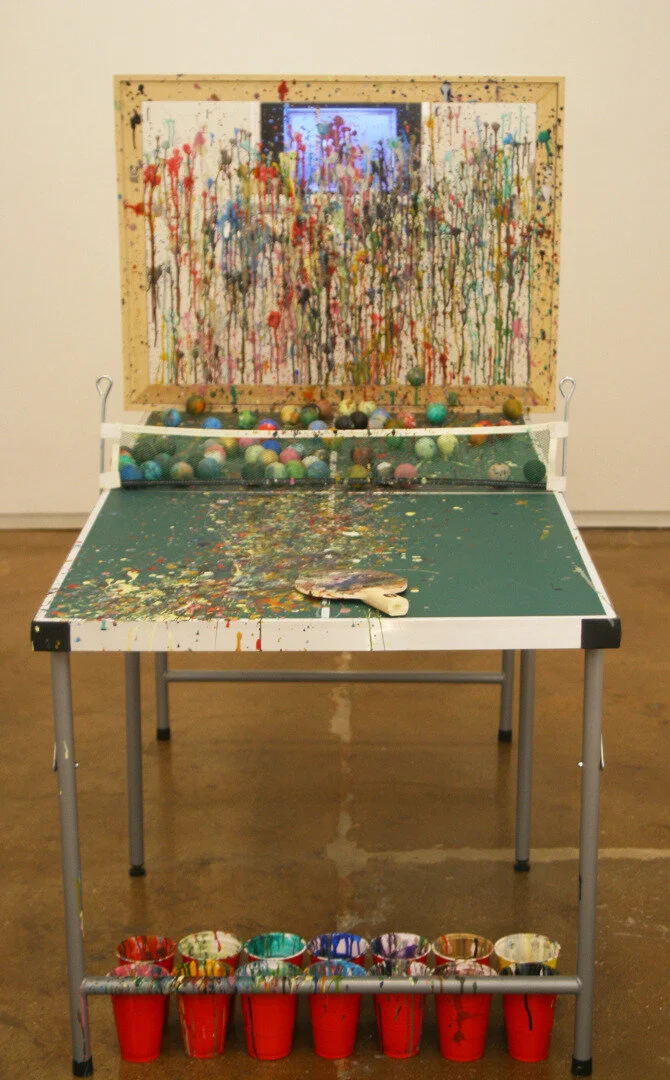No. 179 (action painting), 2009
video performance installation | pedestal, ping pong table, paddle, and 179 ping pong balls, paint, Solo plastic cups, frame, video, TV monitor, DVD player | Single-channel DVD | 3:35min (looped) | edition 2 of 7 + 1AP



Laura Wertheim, PhD in Art History, Performance Art studies, at University of Minnesota, on No. 179 (Action Painting):
"Beginning in the sixties and seventies, many artists began to mobilize performance strategies to push up against long standing patriarchal art historical traditions. While performance relished in its ephemerality and anti-disciplinarity, seminal and pioneering histories of performance art, like RoseLee Goldberg’s Performance Art (first published in 1979), began to interrogate performance art formally and historically. Today, performance undoubtedly no longer exists at the margins of discourse but instead constitutes a discrete discipline, within which many have questioned the extent to which it can retain its anarchic tendencies.
Questions of the body are fundamentally tied up in performance art –or body art—and many artists have sought to dismantle the emblematic female body as the site and object of desire through performance. However, these hopes surrounding the liberating promise of the dematerialization of art has turn to doubt, as Lucy Lippard famously explained in her book Six Years (1973). And so we must ask, how can performance be reconfigured so as to become again a viable strategy for exercising contemporary conceptual work? How can the artist reclaim her body from the stabilizing gesture of discourse and history, so as to own her body once more?
The Action Painting series, (which make explicit reference to, and reflects upon the masculinist tradition of the 1950s), is an on-going series of video and live performance works that explores the connections between the labor of the artist and the athlete. Performance artists, in their use of their physical bodies, are not unlike professional athletes; both types of performers complete their activity with dedication, skill, strength, and endurance, and yet both are vulnerable to commercialization and commodification. Using the language of sport, the artist's labor is put forth as messy and aggressive. Explosions of color are created, and the paint serves to document the ephemeral movements of the performer. Art historical conventions are appropriated in order to destabilize them; these conventions always already frame the work, and are the fundamental opponent of the artist in the game of art making.”
